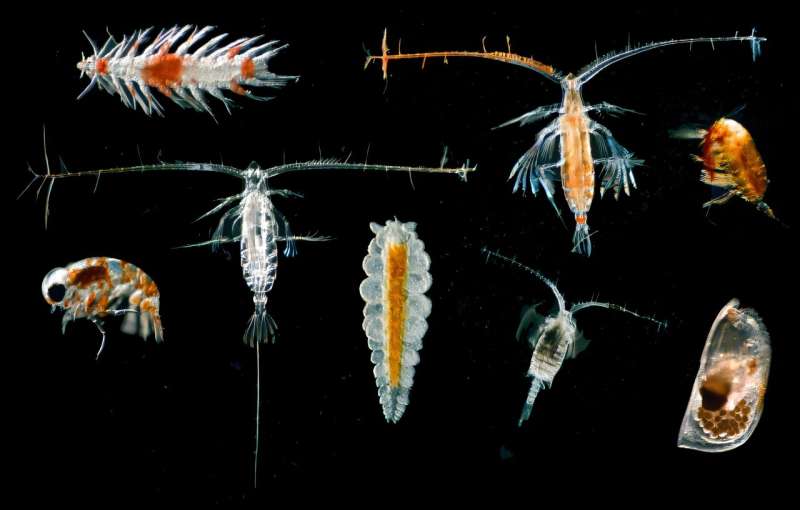Science
Deep-Sea Mining Waste Threatens Vital Ocean Ecosystems

A groundbreaking study led by researchers at the University of Hawaii at Mānoa reveals that waste from deep-sea mining operations poses a significant threat to marine life in the Pacific’s biodiverse Clarion-Clipperton Zone (CCZ). Published in Nature Communications, this research is the first to highlight how discharged mining waste can disrupt the delicate food webs in the ocean’s midwater “twilight zone,” an essential region located between 200 and 1,500 meters below sea level.
The study found that approximately 53% of all zooplankton and 60% of micronekton, small animals that feed on zooplankton, would be adversely affected by the discharge. This disruption could, in turn, impact predators higher in the food chain. “When the waste released by mining activity enters the ocean, it creates water as murky as the mud-filled Mississippi River,” said Michael Dowd, the study’s lead author and an oceanography graduate student at the School of Ocean and Earth Science and Technology (SOEST). “These particles dilute the nutritious, natural food particles usually consumed by tiny, drifting zooplankton.”
The study titled “Deep-sea mining discharge can disrupt midwater food webs” examined the effects of waste released during a 2022 mining trial in the CCZ, an area targeted for the extraction of deep-sea polymetallic nodules containing critical minerals like cobalt, nickel, and copper. Researchers collected and analyzed water samples from the depths of the discharge, discovering that the concentration of amino acids—a key marker of nutritional value—was significantly lower in mining waste particles compared to naturally occurring particles that support life in these depths.
Erica Goetze, a co-author and oceanography professor at SOEST, emphasized the wider implications of the findings, stating, “This isn’t just about mining the seafloor; it’s about reducing the food for entire communities in the deep sea.” The research indicates that many animals at the discharge depth rely on naturally occurring detrital particles for sustenance, which mining plume particles could replace.
The study arrives at a critical juncture as some nations intensify efforts to meet the rising global demand for metals essential for electric car batteries and other low-carbon technologies. Currently, approximately 1.5 million square kilometers of the CCZ are licensed for deep-sea mining operations.
Understanding the Impact of Mining Waste
The process of deep-sea mining involves collecting nodules from the seafloor along with seawater and sediments. These materials are then transported to a collection ship for processing, where the nodules are separated from the sediment waste. This sediment, along with pulverized nodule particles, is subsequently returned to the ocean. The precise release depth for this waste remains unclear, although some mining operators have suggested discharging it within the twilight zone.
Until now, the implications of this waste on midwater communities were not well understood, creating a gap in governance over the burgeoning mining industry. The twilight zone is home to a rich variety of life, including krill, fish, squid, and gelatinous species such as jellyfish. These creatures play a crucial role in carbon transport, vital for both ocean health and human well-being.
“Our research suggests that mining plumes don’t just create cloudy water—they change the quality of what’s available to eat, especially for animals that can’t easily swim away,” noted Jeffrey Drazen, a co-author and deep-sea ecologist at SOEST. “It’s like dumping empty calories into a system that’s been running on a finely tuned diet for hundreds of years.”
Urgent Calls for Regulatory Action
The findings of this study raise urgent concerns regarding potential long-term, system-wide effects if large-scale commercial mining proceeds without adequate environmental safeguards. The CCZ is also home to Pacific tuna fisheries, meaning that the waste could ultimately affect fish populations that are critical to global food supplies.
Brian Popp, another co-author and a professor of earth sciences at SOEST, emphasized the importance of making informed decisions before commercial deep-sea mining begins. “If we don’t understand what’s at stake in the midwater, we risk harming ecosystems we’re only just beginning to study.”
The authors hope their findings will guide international regulatory decisions currently being shaped by the International Seabed Authority and the National Oceanic and Atmospheric Administration, which oversees environmental assessments for U.S.-led deep-sea mining initiatives. They advocate for expanded research to protect the full vertical extent of ocean ecosystems.
“Before commercial deep-sea mining begins, it is essential to carefully consider the depth at which mining waste is discharged,” added Drazen. “The fate of these mining waste plumes and their impact on ocean ecosystems varies with depth, and improper discharge could cause harm to communities from the surface to the seafloor.”
Additional contributors to this study include oceanography graduate students Victoria Assad and Alexus Cazares-Nuesser, along with Angelicque White, a professor at SOEST. The complete study can be found in Nature Communications, DOI: 10.1038/s41467-025-65411-w.
-

 Science3 weeks ago
Science3 weeks agoInventor Achieves Breakthrough with 2 Billion FPS Laser Video
-

 Top Stories3 weeks ago
Top Stories3 weeks agoCharlie Sheen’s New Romance: ‘Glowing’ with Younger Partner
-

 Entertainment3 weeks ago
Entertainment3 weeks agoDua Lipa Aces GCSE Spanish, Sparks Super Bowl Buzz with Fans
-

 Business3 weeks ago
Business3 weeks agoTyler Technologies Set to Reveal Q3 Earnings on October 22
-

 Health3 weeks ago
Health3 weeks agoCommunity Unites for 7th Annual Into the Light Walk for Mental Health
-

 World3 weeks ago
World3 weeks agoR&B Icon D’Angelo Dies at 51, Leaving Lasting Legacy
-

 Health3 weeks ago
Health3 weeks agoCurium Group, PeptiDream, and PDRadiopharma Launch Key Cancer Trial
-

 Entertainment3 weeks ago
Entertainment3 weeks agoRed Sox’s Bregman to Become Free Agent; Tigers Commit to Skubal
-

 Entertainment3 weeks ago
Entertainment3 weeks agoMother Fights to Reunite with Children After Kidnapping in New Drama
-

 Health3 weeks ago
Health3 weeks agoNorth Carolina’s Biotech Boom: Billions in New Investments
-

 Science3 weeks ago
Science3 weeks agoNorth Carolina’s Biotech Boom: Billions Invested in Manufacturing
-

 Top Stories3 weeks ago
Top Stories3 weeks agoDisney+ Launches Chilling Classic ‘Something Wicked’ Just in Time for October









